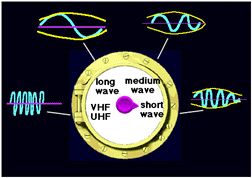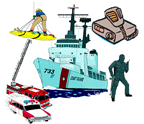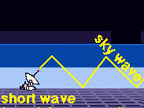





Radio Band | Uses |
|---|---|
 Short Wave Frequencies: 2300-26,100 kHz Wavelengths: 11-130 meters (1 kHz = 1000 Hz = 1000 wave cycles per second) |
 Local & international, amateurs, maritime and land mobile, point-to-point communications, industrial, scientific, citizens band, search & rescue, police, taxi drivers |
Wave Paths | Effects of Space Storms |
 Signal is reflected from ionosphere so can achieve long distance communicaton. The signal paths are even longer at night because the ionization layer is at higher altitude. Short wave is often the cheapest and sometimes only means of communication in remote regions. Larger distances can be covered at these frequencies than at frequencies shorter and longer. | Space weather disturbances have major and dramatic consequences for short wave communications:
For Satellite-to-Ground Communications: Signal quality is affected by irregularities in the ionosphere which produces phase and amplitude variations in the received signal. |